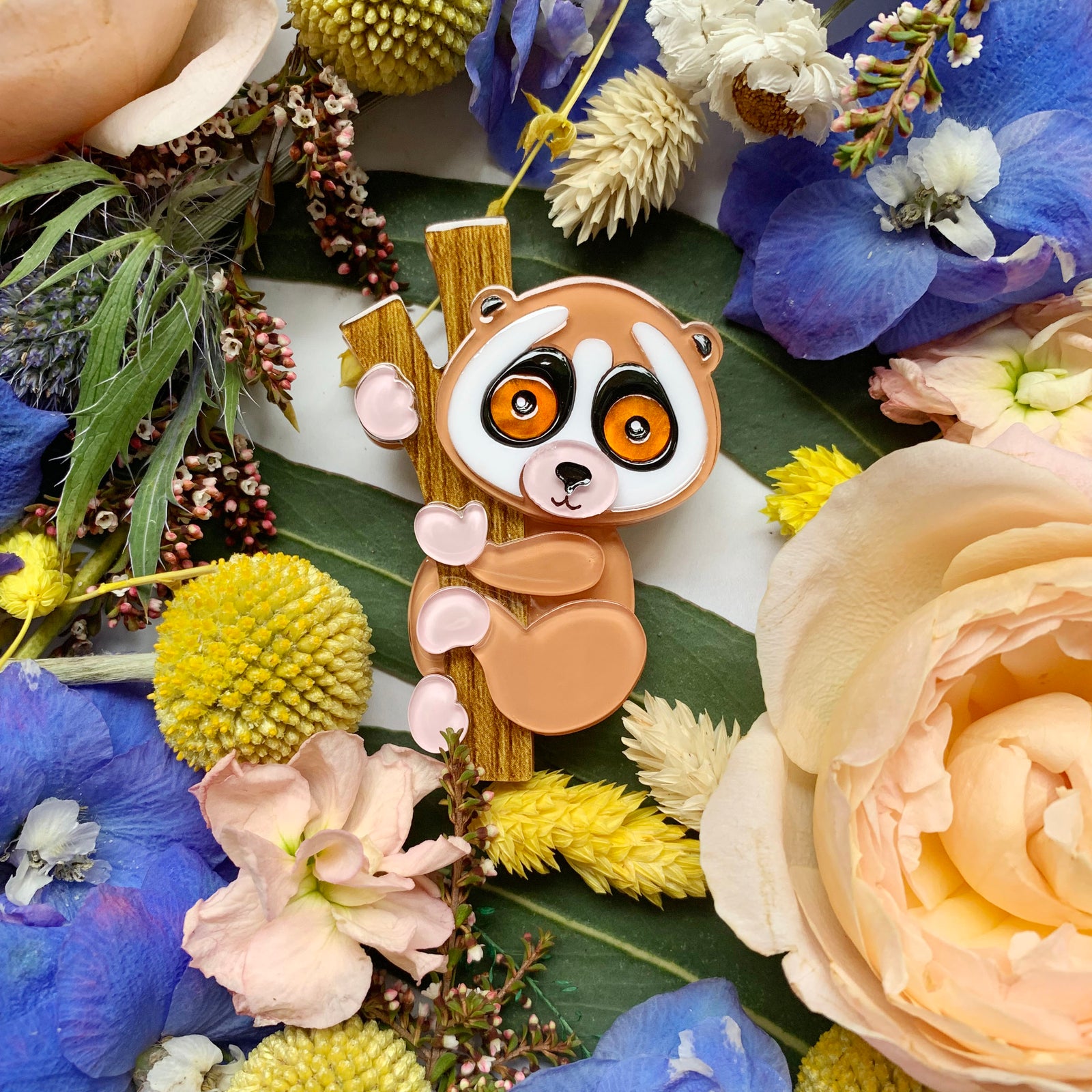✨ Support Small, Shine Big! ✨
💌 60% off with code FESTIVE on She Loves Blooms Jewellery 🌈
🛍️ Free AUS SHIPPING OVER $160🌻

She Loves Blooms Expert Guest Blog by Prof Anna Nekaris, Director, Little Fireface Project www.nocturama.org; @littlefireface

Slow and slender lorises are incredibly weird and cute nocturnal primates, with nine species found throughout Asia from Sri Lanka and India all the way to the Philippines. I started studying lorises in 1994, working in almost all of their range countries. One thing stands out – their weirdness and cuteness are their downfall. But read on below and get through the gloom to see how some simple things like your fashion choices can really help!

First – their weirdness. They are ninja-like in their movements and cannot leap; they are shy when they see humans or bright lights and can even look spooky when a torchlight catches their eyes producing an eerie glow; they seem like they are sleeping, but in fact they can go into regular torpor – a mini hibernation; they seem silent, but they communicate in pure ultrasound; and they are venomous with a bite that can (mainly) kill another slow loris, but also a human.
It seems that in over the 1000s of years that humans have interacted with them, these features have made lorises the perfect source for traditional dark magic practices, using lorises to harm others, as well as over 100 healing uses of lorises in traditional medicines. With a slow life history of only one baby per year and hunting all year round, these practices have meant that lorises are declining so much that in some parts of their range they are already extinct.

If that were not bad and sad enough, that other element, their cuteness, is a double-edged sword. The bad edge is that they are highly desired as pets not only in their range states, where they are all legally protected, but also abroad.
Protected by international trade treaties, lorises are still smuggled to countries like Russia and Japan, where they may even become YouTube and Tiktok stars. In fact, most people have only seen a cute “pet” loris and our studies have shown that people prefer photos of lorises cuddled by humans to those in the wild.
To prevent their venomous bite, the teeth of these lorises are often removed. Very social in the wild, pet lorises are subject to a life of isolation. Gum feeding specialists, they are subject to a diet of fruit, giving them diabetes, kidney failure and other life-threatening conditions. Nocturnal, they are played with in the day resulting in severe eye disease. Yet people go on liking these videos and even wanting one as a pet. It is so hard to turn this around!

One thing that can help is to spread awareness kindly. Even reading my words above, there is a feeling of hopelessness and darkness, but this doesn’t have to be the case. Having been an advocate of lorises my whole adult life, it has been amazing to see what a bit of outreach and education can do.
Most animal lovers really do NOT want to see animals being harmed. In my own conservation project, we support local village artisans who create slow loris jewelry. The power of jewelry or a tote bag or a t-shirt can be strong in delivering a conservation message. So, when a couple years ago, I saw the beautiful brooches of Slow Lorises by She Loves Blooms, I was so happy to see that another designer had taken up their cause.

The strength of that message I hope can be understood from this little story. Wearing one of those brooches, I went into a hairdresser. The girl behind the counter said – “Oh my goodness! What a beautiful brooch! That’s a slow loris, isn’t it? Those are the animals that are so cute, but we shouldn’t have them as pets. Did you know they are venomous and endangered in the wild?” From there, I could excitedly tell her about my own mission to spread that message and how happy I was that she had heard it. The key here though is that a simple and beautiful brooch was the vehicle for that exchange.

Many of us know the conservation stories of large charismatic species of elephants, tigers and chimpanzees. But for the underdog species like slow lorises, they need all the help they can get. This goes even further when we think of all the trees and plants and insects that are declining that few of us can even name.
The more we provide avenues for people to learn those names, those precious species can’t be forgotten. So, I would just like to thank Yvette and She Loves Blooms for helping keep the name and the image of lorises alive through their wonderful designs!
Comments will be approved before showing up.